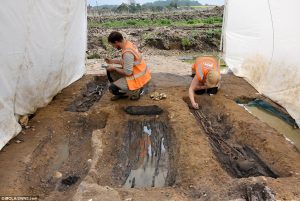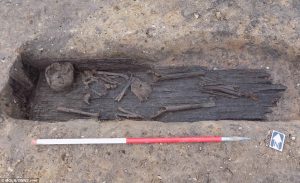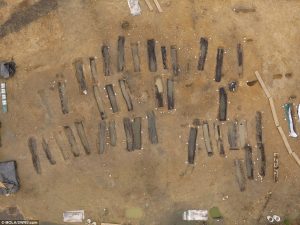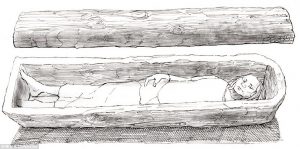A cemetery of first Christians in the United Kingdom was unearthed in Norfolk. So far archaeologists uncovered over 80 coffins of Anglo-Saxon Christian community members dating back 1300 years ago.

The cemetery was discovered during excavations prior to development of a fishing lake and flood defence system at Wensum View in Norfolk. Wet soil conditions allowed for preservation of the wooden coffins which normally decay over time and are missing in other Anglo-Saxon Christian graves. Waterlogged conditions at the Norfolk site preserved the graves in well conditions due to the combination of acidic sand and alkaline water.

During the course of excavations plank-lined graves with wooden grave markers were unearthed, being possibly the earliest examples of such type of burial. The graves have a rare form in the United Kingdom. They were cut into the ground and lined with timber planks before the body was placed inside and planks placed on top to cover it.

Some of the coffins were made of tree trunks that were split in two, lengthways, then hollowed out. According to common archaeological knowledge tree trunk coffins first appeared in Europe during the Bronze Age, but did not appear again until the Medieval period. This is the first time they have been excavated and recorded by archaeologists in modern times. Graves had been positioned in an east-west alignment and contained no grave goods, which is a typical situation in Christian practices.

According to archaeologists these well-preserved graves are a significant discovery which will advance our understanding of Middle-Saxon religious beliefs and rural communities and two documented types of burials, lank-lined graves and tree trunk coffins, could signify the blending of pagan and Christian practices.

Further detailed analysis of the cemetery provides the hope of better understanding the actual people living according to this new religion. Scientists also plan to carry out tree-ring dating, DNA testing and dental analysis to build a better picture of the community that has been uncovered.

(after International Business Times, Mail Online, Independent, Museum of London Archaeology, Historic England & Judith Dobie)